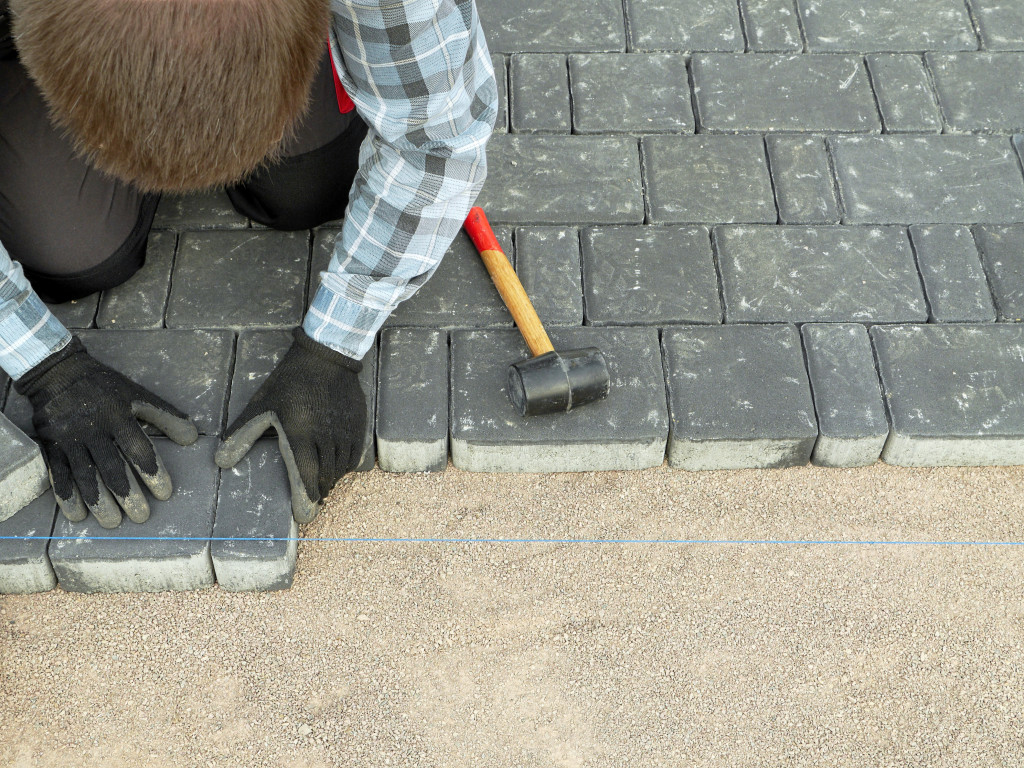When it comes to outdoor landscaping, nothing beats constructing pathways or paved areas. Whether a patio, deck, pergola, walkway, or driveway, a pavement offers functional and aesthetic values. But as far as a pathway is concerned, its paving material is a key consideration. The material used and installed will determine the pavement’s beauty, safety, usability, and longevity. As such, you must be highly critical and selective of the paving material to use for your pathway.
Keep in mind that there’s science behind every paving material. When selecting, understand how they are made and installed. That said, here are paving materials to choose from:
1. Pavers
For the uninitiated, pavers are used for outdoor paving and exterior flooring. They typically consist of a mixture of concrete and coloring agents. These pavers are usually molded into certain forms and set on the ground for installation. In the past, only concrete pavers were readily available in the market. But today, they are made of paving stones, bricks, and even tiles. They now come in various shapes and sizes, colors and textures, and styles and designs.
2. Concrete
Concrete is one of the most popular construction materials. But it is also commonly used as a paving material. It is a mixture of water, sand, cement, and gravel. These proven-and-tested ingredients are combined and molded into forms. The forms can then be stamped, smoothened, tinted, and patterned during the manufacturing process. From there, they can be set on the ground for your pavement construction.
3. Adobe Block
Adobe block is essentially a dried mud brick. This brick is a mixture of sand, clay, and straw combined with moisture. Once formed into a brick shape, it is baked under the sun’s scorching heat until it turns solid. That is where an adobe block comes to life. Several adobe blocks are laid on the ground and sealed together to form a pathway during the pavement construction.
4. Bricks
Bricks have long been used in the world of construction. Bricks are brought to life by firing a combination of clay and other materials in a kiln. Think of the castles, churches, and old structures during the renaissance period. Several of these ruins can still be seen in the present times. But today, these materials are best used for paving. They are perfect for your pavement, whether a walkway or patio.

5. Flagst2ones
Natural stone is ideal for paving construction. But when it comes to this, flagstones top the list. They come in various types, such as sandstone, limestone, bluestone, and quartz. But the natural stone slabs are usually one to three inches in thickness, typically in odd shapes. Ultimately, flagstones are a top choice for patios and front paved areas.
6. Cut stones
Cut stones are also known as stone tiles. As the name would suggest, the stones are cut into tiled shapes. For this reason, they are usually square and rectangular in shape. While they are similar to flagstones, the difference lies in their forms. As mentioned above, flagstones have irregular shapes. Under the cut stones are cobblestones usually made of granite, marble, travertine, and bluestone.
7. Tiles
Tiles are popular materials for interior structures such as floors, bathroom walls, and kitchen areas. However, they can be installed for your outdoor space, whether for a walkway or patio. It’s best to use unglazed tiles for outdoor pavement. For this, you can opt for a porcelain, terracotta, or quarry material for your tiles paving.
8. Wood
Timber can also be a paving material for the most part. However, wood materials are typically used for the flooring of decks and porches. They usually come from hardwood trees such as Ipe, cedar, redwood, mahogany, and tigerwood. During the manufacturing process, the woods are cut into paving materials in particular shapes and sizes. They are usually sanded, smoothened, tinted, and painted before they get sold. From there, they are then installed or constructed into a pathway or floor.
9. Mixed materials
The last on the list is an outdoor pavement consisting of mixed materials. Some homeowners or property managers prefer to install different types of materials for their pathways. They usually seek help from professional landscaping contractors. The ultimate goal is to have the right combination of the paving materials mentioned above.
The manufacturing and installation of paving materials have an impact on your pathway. Be sure to consider the valuable information about the science behind paving materials discussed above. Whether it be pavers, bricks, tiles, or woods, know that your chosen paving materials will determine the overall success of your pathway construction.
